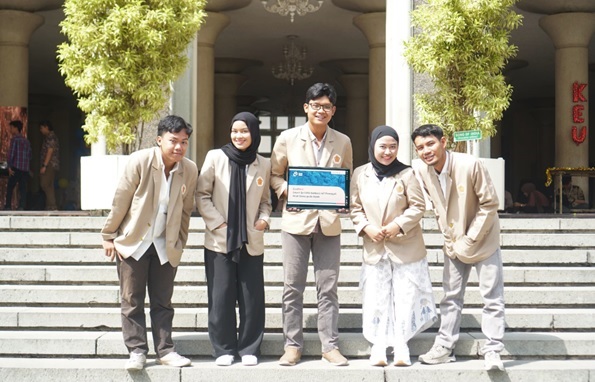
The increasing demand for chicken meat every year makes broiler farming a potential industrial sector in Indonesia.
High consumer consumption of chicken, coupled with stable population growth, positions this industry as a promising sector for livestock entrepreneurs.
However, the poultry industry in Indonesia faces challenges, one of which is the tropical climate with generally high ambient temperatures. Hot temperatures can lead to heat stress in chickens, negatively impacting livestock productivity.
“Chickens experiencing heat stress show decreased appetite, stunted growth, and even a risk of death. This affects production results and reduces farmers’ profits,” said Levia Arkananta Sarjono, a student in the Animal Science and Industry program at UGM’s Faculty of Animal Science (Animal Science UGM), on Wednesday (Sep. 18).
Innovations are necessary to maintain the health and productivity of chickens in high-temperature conditions. One potential innovation is the development of a tool for improved temperature and humidity regulation.
To this end, Sarjono and a team of UGM students developed CoolNest as an innovative solution.
CoolNest is designed to prevent heat stress by creating a more optimal cage environment through better temperature and humidity management.
“With this tool, chickens can grow more optimally according to their genetic potential while maintaining high productivity,” Sarjono explained.
The PKM-PI team from Universitas Gadjah Mada, supervised by Dr. Danang Lelono with team leader Widha Rizqika Prasetya (Electronics and Instrumentation), includes Levia Arkananta Sarjono, Arsyta Notari Lifty Azuhra (Animal Science and Industry), Heva Adlli Wijaya (Electronics and Instrumentation), and Ilyasa Ihsan Yasin (Mechanical Engineering).
They successfully created an innovative tool, CoolNest: Smart Sprinkle, based on the Internet of Things, to Prevent Heat Stress in Chickens.
“In designing this tool, we from the CoolNest team conducted visits to partners and literature studies on the components of the tool. Programming of the tool was also done after the design was completed so it could be integrated with the Internet of Things (IoT),” said Widha Prasetya, the team leader.
Prasetya explained that CoolNest has four main components: slave, master, sprinkle, and mobile application. The slave will detect humidity, temperature, and ammonia levels in the cage.
The data collected will be sent to a database and can be accessed through the mobile application.
“When the temperature inside the cage is high, the sprinkle will turn on to normalize the temperature inside the cage. The mobile application helps farmers monitor the environment in the cage, ensuring optimal maintenance management,” she said.
Arsyta Azuhra revealed that the CoolNest tool has been implemented in a partner’s cage at a farm in Sleman Regency. From the practice conducted, CoolNest improved productivity at the partner’s farm.
“The data detected in the cage, such as temperature, humidity, and ammonia levels, has been quite accurate,” said Azuhra.
“With CoolNest, farmers can efficiently understand the cage conditions, allowing them to minimize obstacles during the maintenance period.”
This innovation, CoolNest, created by the student team, has several advantages: in addition to operating automatically, data from CoolNest can be presented in real time and can also adjust cage conditions according to the needs of the chickens.
Author: Agung Nugroho
Post-editor: Afif

